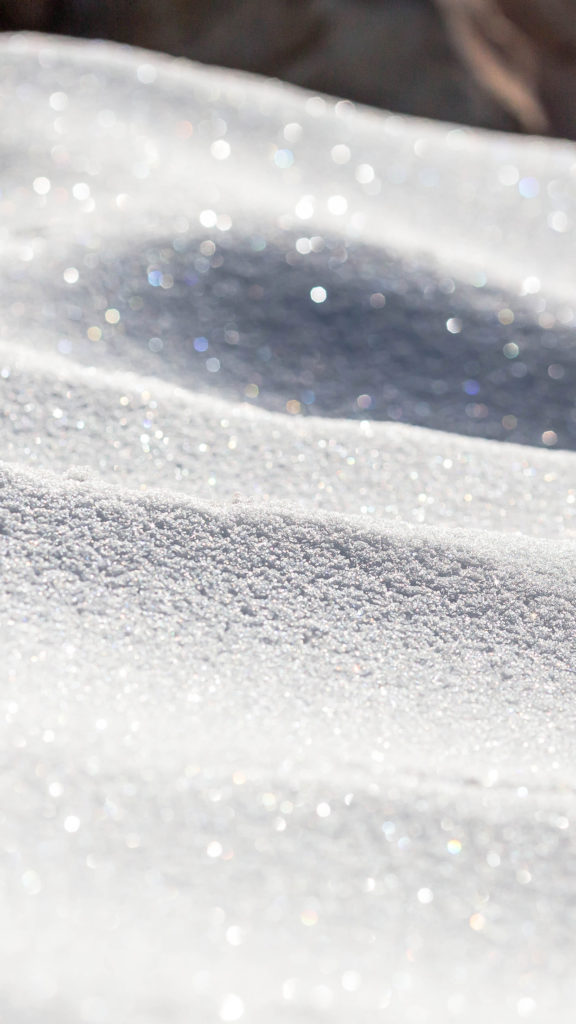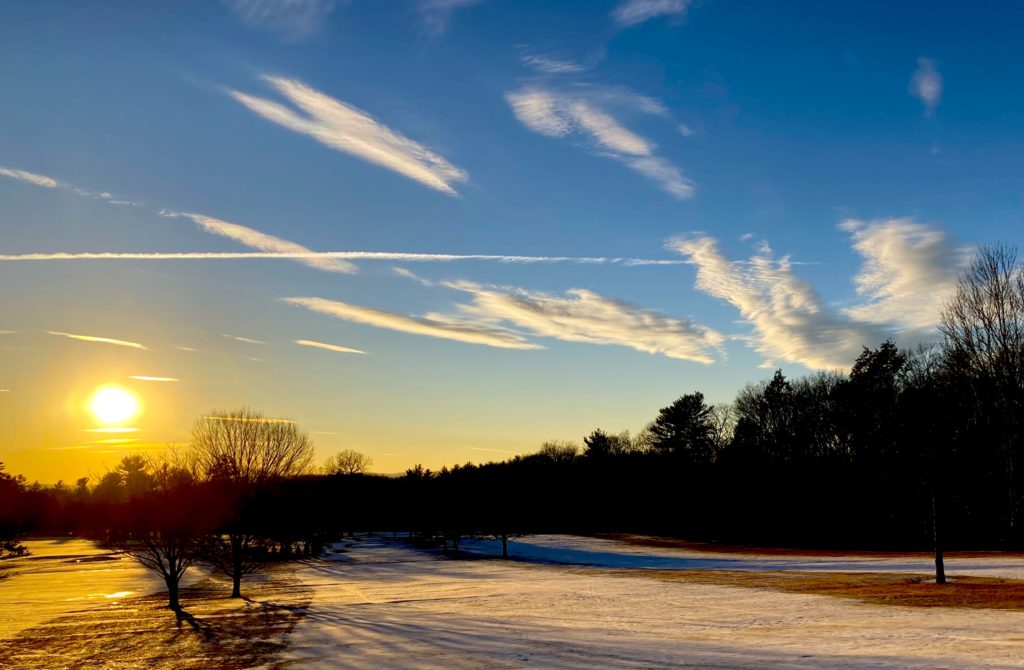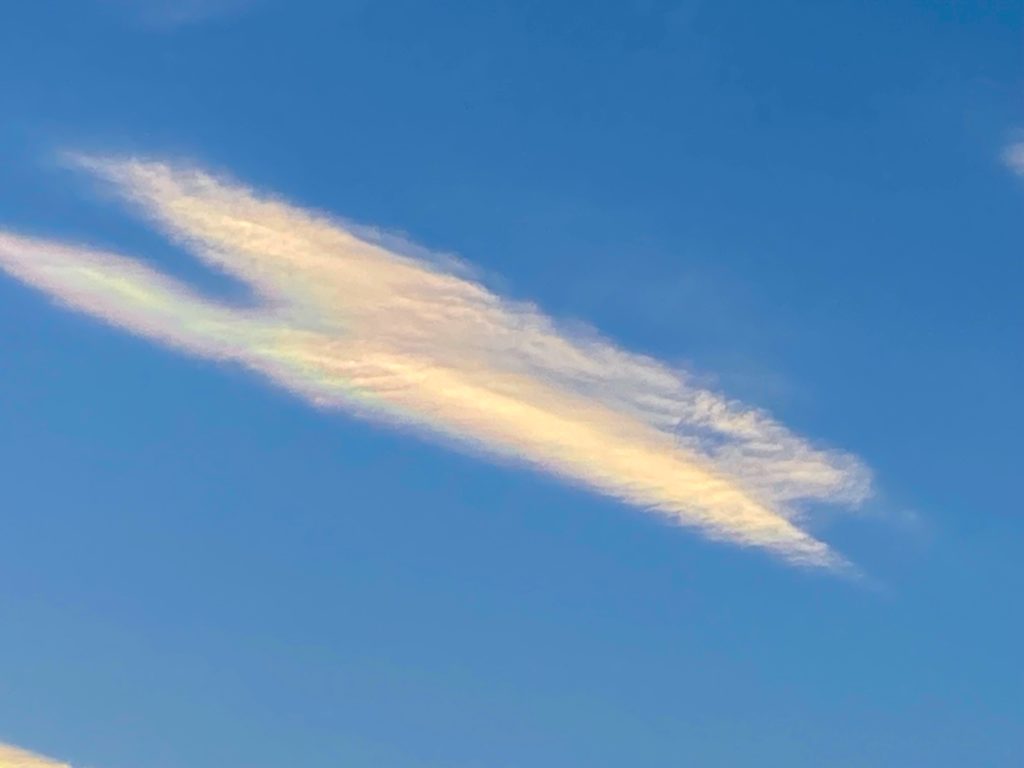Almanac: Diamonds and Pearls

Snow sparkle. Photo: Creative Commons.
When I was a boy, my father would bring cool things home from his chemistry lab at DuPont: test tubes, an ultraviolet light, a vial of mercury, a slab of lead, an old binocular microscope. One day he brought me a prism. It was a standard triangular piece of glass about 3 inches long with very thin beveled edges. I’m sure my father explained that this piece of glass had the ability to separate white light into a rainbow of colors, but I don’t recall him setting us up with the necessary dark room with the prism placed in front of a small hole or aperture, which would have displayed a rainbow against the far wall of the room or on a sheet of paper, much as Isaac Newton did in his experiments in the 17th century. Instead, I put the glass up to my eyes and looked at the world that way. I saw that the edges of things had fuzzy rainbow-like edges, but I was very underwhelmed and seldom played with it after that.
The other day I saw two things that brought that prism back to mind. I was walking with a friend along a wooded trail on a very cold morning. The sky was deep blue, the sun bright but still rather low. My friend paused at one point and said, “Oh, look!” She pointed to the snow in front of us, which sparkled with tiny specks of intense, almost laser-like colors—deep ruby, emerald green, gold, rich violet, all shifting from one color to the next if you moved your head very slightly from side to side. We stood there awhile, transfixed.
Most people in these parts have seen “snow sparkle”—the glittering of sunlight on fresh snow producing fields of brilliantly white diamonds. But seeing snow sparkle with the colors of the spectrum is less common. Ordinary snow sparkle is simply the reflection of white sunlight off individual crystals of snow. This only happens with very fresh and very cold snow because the crystals have to be intact. Any warming or significant disturbance (as with a strong wind) causes the fragile crystals to clump together or be battered into something more resembling a very fine sand.
Snow “flakes” actually come in a wide range of forms beyond the classic six-armed “dendritic” shape. The dendritic shapes act like tiny mirrors, which produces the diamond-like sparkle. But under the right conditions, water can freeze into hollow columns, six-sided solid columns, and solid plates. When sunlight strikes these shapes at a relatively low angle, the different wavelengths of light reflect differently off of the top and bottom sides of the crystals, which separates them enough that specific wavelengths, rather than the usual jumble of wavelengths, hit our retinas.
Later that same day I was walking alone, the setting sun casting long shadows in the snow. Glancing up I noticed that some of the high, thin clouds near the sun were rimmed with bands of pastel red and green.

These were iridescent clouds, which occur most often in very cold clouds like cirrus or lenticular clouds. They are best seen just after the sun has set, but these were quite beautiful even though the sun was still above the horizon.

The colors result from the same physics underlying snow sparkle. Very small ice crystals or water droplets differentially reflect white light, separating the wavelengths. (Larger ice crystals do not produce iridescence, but can cause halos around the sun or moon.) The colors only form when the crystals or droplets are of uniform size, causing them to reflect colors in unison.
Iridescence is found in both living and non-living things, from the swirling sheen of soap bubbles, to the shimmering purple wing feathers of a female mallard or the luster of mother of pearl. The signature of iridescence is a pattern of colors that shifts with the motion of the object or the observer. As with snow sparkles and iridescent clouds, the tiny differences between the top and bottom layers of any iridescence material preferentially reflect different wavelengths of light, depending on the thickness of the film and the position of the observer, causing the shifting play of color that many humans find captivating.
I was captivated by those clouds and the general peacefulness of the scene. But it was also cold and I wasn’t dressed for the Arctic, so I turned back to the trail and headed home for dinner.
Almanac is a regular Indy column of observations, musings, and occasional harangues related to the woods, waters, mountains, and skies of the Pioneer Valley. Please feel free to comment on posts and add your own experiences or observations.

What a vivid appreciation of this amazing phenomenon! I grew up in the North but had never even heard of it. Thanks, Steve, for yet another delightful window into nature’s endless wonder. Nice to see you back.